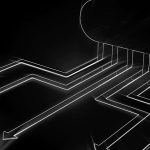The digital transformation wave is reshaping the way businesses operate, innovate, and grow. At the heart of this transformation lies IT Infrastructure as a Service (IaaS)—a cloud computing model that delivers virtualized computing resources over the internet. IaaS eliminates the need for traditional, on-premises infrastructure, empowering businesses with scalable, cost-effective, and flexible solutions.
From startups to large enterprises, IaaS has become a cornerstone for modern IT strategies, driving operational efficiency and unlocking new opportunities. But how exactly is IaaS transforming IT infrastructure as a service? What challenges and benefits come with its adoption? Here, we’ll dive deep into the world of IaaS, exploring its components, strategic advantages, challenges, emerging trends, and actionable insights.
Problem Statement :
Traditional IT infrastructure as a service demands significant capital investment, complex maintenance, and prolonged deployment cycles. Businesses often struggle to scale their resources dynamically, leading to inefficiencies and higher operational costs. Furthermore, maintaining compliance and security with legacy systems has become increasingly challenging in today’s cyber-threat landscape.
Organizations need a solution that offers scalability, flexibility, and cost optimization—all while ensuring robust security and compliance. This is where IaaS steps in.
Core Characteristics of IT Infrastructure as a Service (IaaS):
1. Fundamental Components
- Virtual Computing Resources: Virtual machines (VMs) provide computing power on demand, replacing the need for physical servers.
- Network Infrastructure: Virtual networks facilitate secure and flexible communication.
- Storage Capabilities: Options like block, object, and file storage allow businesses to store and retrieve data efficiently.
- Scalable Environments: Elasticity ensures businesses can scale up or down based on demand.
- Pay-as-You-Go Model: Costs are incurred based on usage, reducing upfront investments.
2. Delivery Models
- Public Cloud IaaS: Infrastructure shared across multiple organizations, ideal for scalability and cost efficiency.
- Private Cloud IaaS: Dedicated infrastructure offering higher security and customization.
- Hybrid Cloud: Combines public and private clouds, balancing flexibility and control.
- Multi-Cloud Strategies: Utilizes multiple cloud providers to avoid vendor lock-in and enhance resilience.
Technical Architecture of IaaS :
1. Compute Resources
- Virtual Machines: Provide customizable computing environments.
- Containerization: Lightweight, portable applications for enhanced agility.
- Serverless Computing: Executes code without infrastructure management, optimizing resource utilization.
- Elastic Scaling: Automatically adjusts resources based on workload demand.
- Flexible Resource Allocation: Ensures efficient utilization of computing power.
2. Network Capabilities
- Virtual Networks: Enable secure communication within cloud environments.
- Software-Defined Networking (SDN): Centralized management of network traffic.
- Connectivity Options: High-speed connections, including VPNs and Direct Connect.
- Security Configurations: Firewalls, intrusion detection systems, and encryption.
- Global Data Center Integration: Ensures low-latency access worldwide.
3. Storage Solutions
- Block Storage: Ideal for transactional databases requiring low latency.
- Object Storage: Best for large volumes of unstructured data.
- File Storage Systems: Facilitates shared access across applications.
- Data Redundancy: Prevents data loss through replication.
4. Performance Optimization: Tiered storage and caching mechanisms boost speed.
Strategic Advantages of IaaS :
1. Cost Management
- Capex to Opex Transformation: Shifts capital expenses to operational expenses.
- Reduced Infrastructure Investment: Eliminates the need for costly hardware.
- Predictable Expenses: Transparent pricing models prevent budget overruns.
- No Hardware Maintenance: Providers handle upgrades and repairs.
2. Business Agility
- Rapid Deployment: Launch new projects or expand existing ones swiftly.
- Scalability: Adjust resources to match evolving business needs.
- Global Accessibility: Access resources from anywhere, ensuring business continuity.
- Faster Time-to-Market: Accelerates development and deployment cycles.
3. Security and Compliance
- Shared Responsibility Model: Providers secure the infrastructure; businesses manage their data.
- Multi-Layer Security Protocols: Includes encryption, firewalls, and monitoring.
- Compliance Adherence: Meets regulatory standards like GDPR, HIPAA, and PCI DSS.
- Continuous Threat Monitoring: Proactive defense against cyber threats.
Provider Evaluation Criteria
Selection Considerations
- Performance Metrics: Ensure low latency and high availability.
- Service Level Agreements (SLAs): Define uptime guarantees and support commitments.
- Global Infrastructure Footprint: Access to data centers worldwide.
- Support Capabilities: 24/7 customer service and technical expertise.
- Integration Flexibility: Seamless interoperability with existing systems.
Top IaaS Providers
- Amazon Web Services (AWS): Market leader with robust tools and scalability.
- Microsoft Azure: Strong in hybrid cloud and enterprise integration.
- Google Cloud Platform (GCP): Excels in data analytics and AI.
- IBM Cloud: Offers specialization in secure, enterprise-grade solutions.
Migration Strategies
1. Implementation Approach
- Assessment and Planning: Evaluate existing infrastructure and future needs.
- Workload Analysis: Identify suitable workloads for migration.
- Migration Methodologies: Choose between lift-and-shift, re-platforming, or re-architecting.
- Risk Mitigation: Address potential pitfalls through contingency planning.
- Phased Transition: Gradual migration to minimize disruptions.
2. Best Practices
- Comprehensive Discovery: Catalog all applications and dependencies.
- Dependency Mapping: Understand interconnections between systems.
- Performance Testing: Validate functionality post-migration.
- Rollback Mechanisms: Prepare for potential failure scenarios.
- Continuous Optimization: Monitor and refine infrastructure post-migration.
Emerging Trends in IaaS
Technology Evolution
- AI-Driven Infrastructure: Automates resource management and performance tuning.
- Edge Computing Integration: Brings processing closer to users for reduced latency.
- Serverless Architectures: Enhances scalability and reduces overhead.
- Automated Resource Management: AI-based tools predict and allocate resources efficiently.
- Predictive Optimization: Leverages analytics to foresee and address potential issues.
Challenges and Mitigation
Common Implementation Challenges
- Performance Variability: Ensure consistent performance under varying loads.
- Vendor Lock-In Risks: Avoid reliance on a single provider.
- Data Migration Complexities: Plan for compatibility and transfer security.
- Security Concerns: Address evolving cyber threats.
- Cost Management: Prevent unforeseen expenses.
Mitigation Strategies
- Multi-Cloud Approach: Reduces dependency on a single vendor.
- Comprehensive Risk Assessment: Identify and address vulnerabilities.
- Continuous Monitoring: Maintain oversight with real-time analytics.
- Flexible Contract Negotiations: Secure favorable terms with providers.










